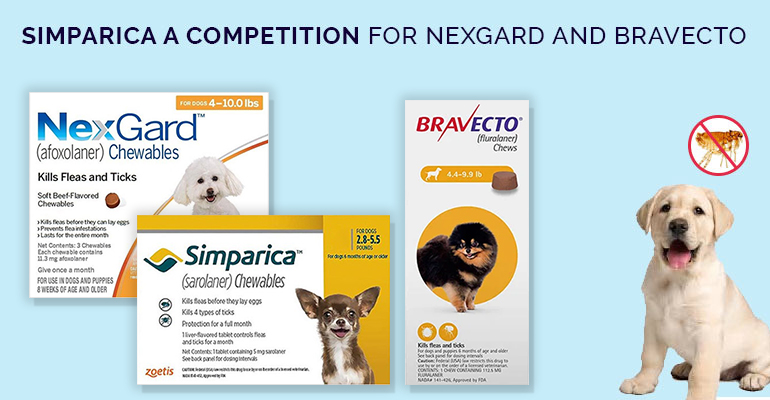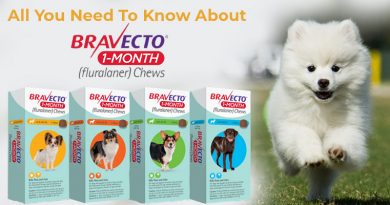Simparica – A Competition for Nexgard and Bravecto
For pet parents, this is a golden time because there are numerous options available in the market for flea and tick treatment of their dog. Almost every year big brands come up with more effective, safer and affordable products just to be in competition and generate more sales. This competition is ultimately benefiting the customer because as a consumer you now have a huge range of products to choose from. Out of the vast range of products, there is one product named Simparica that is very popular and is giving tough competition to popular products like Bravecto and Nexgard. Simparica came into the market two years ago and has created a unique customer base.
However, after more than two years of its existence in the US market, there are people who have a lot of questions about the product and that’s the reason we have come up with this blog to answer your questions and clear your doubts.
Below is the answer to the questions that you might want to ask.
1. What’s The Efficacy?
Simparica is as efficient as its competitors Nexgard and Bravecto. The treatment starts killing (Ctenocephalides felis) fleas within 3 hours of administration and American Dog tick (Dermacentor variabilis); Lone Star ticks (Amblyomma americanum); Brown Dog tick (Rhipicephalus sanguineus); and Gulf Coast tick (Amblyomma maculatum) within 8 hours of administration.
Simparica is >96.9% efficient in treating ticks and > 96.2% efficient in eliminating fleas. Nevertheless, regular use of simparica provides 100% treatment to fleas and ticks.
2. Is This Treatment Safe?
Nowadays, the first question that a pet owner asks is about safety. So, yes, the treatment is safe but there are exceptions to it.
According to the precaution statement in the product label, it can cause abnormal neurologic signs such as tremors, decreased conscious proprioception, ataxia, decreased or absent menace, and/or seizures in some dogs. So it is always advised to consult your vet before proceeding.
However, in a field study conducted in US Simparica was tested on 315 dogs and 164 dogs were treated with another active control. Simparica’s active ingredient Sarolaner showed that it was safe for almost all the dogs. There were some reactions observed in some dogs treated with simparica and active control which are given below in the table.

The table above shows that the number of dogs showing the side effects are very less but having said that you also can’t ignore the rare possibility of an adverse reaction. That’s the reason you should always consult your vet before using this or any other product.
You can always call Zoetis on 1-888-963-8471 to report any adverse reactions or to ask for a copy of safety data sheet.
3. Can It Be Used On Pregnant Or Lactating Dogs?
It is recommended to refrain from using this product on pregnant or lactating dogs because the safe use of this product on pregnant or lactating dogs is still not evaluated.
4. How Does It Work?
Sarolaner is the active ingredient which is a close relative of isoxazoline family. Below is the chemical structure of Sarolaner.
Once the fleas or ticks bite to feed blood they also ingest this drug present in the blood. Sarolaner kills fleas and ticks by overstimulating the nervous systems of fleas and ticks.
5. What Type Of Treatment It Is?
Simparica is a monthly oral treatment that comes as a highly palatable chew. You can also mix it with food and give to your beloved pooch.
*Simparica can only be given to dogs more than 6 months and weighing more than 2.8 pounds.
Now you might be having a clear picture of Simparica as a flea and tick treatment. If still, you have any existing questions in your mind you can call us on 1-800-797-5305 Mon-Sat 8 am – 6 pm CST or you can mail us on support@budgetvetcare.com




